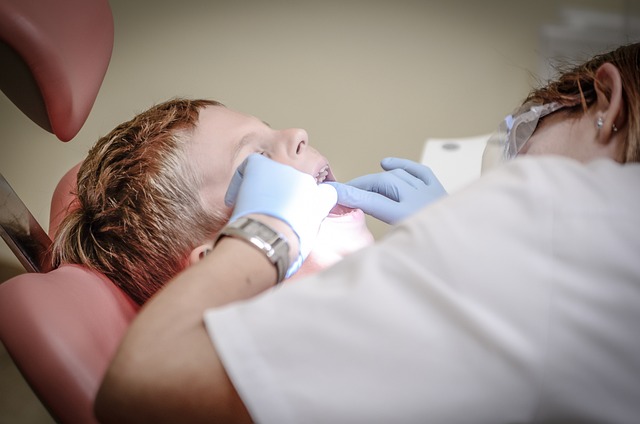Are you wondering whether you can still get veneers if you have periodontal disease? Discover the dental solutions available for you.
1. Understanding Periodontal Disease: What You Need to Know
Periodontal disease, also known as gum disease, is a common condition that affects the gums and supporting structures of the teeth. It is a result of bacterial infection and can range from mild inflammation to severe damage to the gums and bone surrounding the teeth. Understanding periodontal disease is crucial for maintaining good oral health and preventing further complications.
Here are some key points to know about periodontal disease:
-
- Causes: Poor oral hygiene, smoking, genetic factors, hormonal changes, certain diseases, and certain medications can contribute to the development of periodontal disease.
- Symptoms: Common signs of periodontal disease include red, swollen, or bleeding gums; persistent bad breath; loose or sensitive teeth; receding gums; and changes in the way your teeth fit together when you bite.
- Dangers: If left untreated, periodontal disease can lead to tooth loss, bone loss, and other serious oral health problems. It has also been linked to an increased risk of heart disease, stroke, and certain systemic diseases.
- Prevention: Practicing good oral hygiene, such as regular brushing and flossing, along with regular dental check-ups and cleanings, is essential for preventing periodontal disease. Avoiding smoking and maintaining a healthy lifestyle also contribute to prevention.
By understanding the causes, symptoms, dangers, and prevention of periodontal disease, you can take proactive steps to maintain your oral health and minimize the risk of developing this condition. If you notice any signs or symptoms of periodontal disease, it is important to consult a dental professional for a proper diagnosis and appropriate treatment.
2. The Impact of Periodontal Disease on Your Dental Health
Periodontal disease, also known as gum disease, is a common dental condition that affects the health of your gums and the supporting structures of your teeth. This condition occurs when plaque, a sticky film of bacteria, builds up on the teeth and around the gumline. If not properly treated, periodontal disease can have a significant impact on your dental health.
Here are some ways in which periodontal disease can affect your oral health:
- Tooth Loss: Advanced periodontal disease can lead to tooth loss as the bacteria damage the gums and the supporting bone structure.
- Gum Recession: As periodontal disease progresses, it can cause the gums to recede, exposing the delicate tooth roots and making the teeth appear longer.
- Bad Breath: One of the common symptoms of periodontal disease is persistent bad breath, which can be embarrassing and affects your overall confidence.
Failing to address periodontal disease can also have systemic effects on your overall health. Recent research suggests a connection between gum disease and certain medical conditions, such as heart disease and diabetes. It is crucial to take periodontal disease seriously and seek timely treatment to maintain optimal dental and overall well-being.
3. Exploring Veneers as a Dental Solution for Periodontal Disease
Veneers are a dental solution that has gained popularity for their effectiveness in treating periodontal disease. They are
Here are some key benefits of :
-
- Improved aesthetics: Veneers can instantly transform the appearance of teeth affected by periodontal disease. They effectively camouflage discoloration, stains, and minor misalignment, giving you a brighter and more even smile.
- Stain-resistant: Porcelain veneers are highly resistant to stains, making them a durable solution for those dealing with periodontal disease. You can enjoy your favorite foods and beverages without worrying about discoloration.
- Protection and strength: Veneers act as a protective shield for teeth affected by periodontal disease. They help protect the enamel and prevent further damage, such as tooth sensitivity and decay.
- Minimal invasiveness: The process of getting veneers involves minimal removal of tooth structure. Compared to other dental solutions, veneers offer a conservative approach while effectively addressing the issues caused by periodontal disease.
4. Can Veneers be an Option for Patients with Periodontal Disease?
Patients with periodontal disease may wonder whether veneers are a viable option for them. While veneers can improve the appearance of teeth, it is essential to consider the state of their gums and supporting structures before considering this treatment. Here are a few key points to keep in mind:
- Assessment by a dental professional: Before determining whether veneers are suitable, patients with periodontal disease should seek an evaluation from their dentist or periodontist. This assessment will help determine the severity of the disease, the health of the gums, and the stability of the supporting structures.
- Addressing periodontal disease: In most cases, treating periodontal disease should take precedence over pursuing any cosmetic dental work. The infection needs to be controlled, and the gums need to heal before considering veneers. This may involve scaling and root planing, gum grafting, or other periodontal procedures.
Once the periodontal disease is under control and the supporting structures are stabilized, veneers can be considered as an option. However, it is important to note that veneers are not a treatment for periodontal disease but rather a cosmetic solution that can enhance the appearance of the teeth and smile. Engaging in good oral hygiene practices and ongoing periodontal maintenance is crucial to ensure the long-term success of both the veneers and the patient’s oral health.
When it comes to getting veneers and dealing with periodontal disease, consulting a dentist is of utmost importance in ensuring the best outcome for your oral health. Here’s why: 1. Expert diagnosis: Dentists are highly trained professionals who can accurately diagnose periodontal disease and determine its severity. They possess the knowledge and expertise to differentiate between the various stages of the disease, ensuring that appropriate treatment is provided before considering veneers. 2. Pre-treatment periodontal care: Prior to getting veneers, it is essential to have your gum disease under control. Dentists can develop a customized treatment plan to manage periodontal issues effectively. This may involve professional cleaning, scaling, root planning, or even specialized procedures like gum grafts to restore the health of the gums. Once the disease is managed, your dentist can proceed with the veneer treatment. When considering veneers in periodontal disease cases, it is crucial to assess their feasibility properly. Here are some key factors to consider: requires a comprehensive evaluation of various factors. By considering the patient’s gum health, overall oral hygiene, and stability of the underlying structures, dental professionals can determine whether veneers are a suitable treatment option. Proper assessment is crucial to ensure the success and longevity of veneers in periodontal disease cases. Veneers can be an effective treatment option for periodontal disease, but there are several important factors to consider before moving forward with this procedure. By taking these factors into account, you can ensure that veneers are the right choice for you and that you achieve the best possible results. 1. Severity of the periodontal disease: It’s crucial to determine the severity of your periodontal disease before considering veneers. This helps determine if veneers are a suitable treatment option or if other treatments, such as gum therapies or surgical treatments, are necessary first. 2. Oral hygiene habits: Maintaining good oral hygiene habits is essential for the success of veneers and the overall health of your teeth and gums. Before proceeding with veneers, it’s important to evaluate your oral hygiene routine and make any necessary improvements, such as brushing and flossing regularly and using antibacterial mouthwash. 3. Overall oral health: Veneers are typically placed on healthy teeth, so it’s important to ensure your overall oral health is in good condition. Factors such as gum disease, tooth decay, or other oral health issues can affect the success and longevity of veneers. It’s essential to address any existing oral health concerns before considering veneers. 4. Long-term commitment: Veneers are a long-term commitment as they are irreversible. The natural tooth structure is often removed to accommodate the veneer, which means that this procedure is not reversible. It’s crucial to fully understand and be committed to the long-term care and maintenance of veneers before proceeding with the treatment. When considering veneers for individuals with periodontal disease, it is crucial to carefully evaluate the potential risks and benefits. While veneers can enhance the aesthetics of your smile, it is important to weigh the effects on your overall oral health. Here are some key factors to consider: Considering these factors will enable both you and your dentist to make an informed decision about whether veneers are suitable for your specific needs. Prioritizing your overall oral health is paramount and should not be overshadowed by the desire for an aesthetic improvement. When it comes to managing periodontal disease, there are various alternative treatment options available that can help patients regain their oral health. These alternatives, which can be used in conjunction with traditional treatments, aim to provide patients with additional choices for addressing the underlying causes and symptoms of periodontal disease. 1. Laser therapy: One alternative treatment option is laser therapy, which involves using a laser to remove infected or damaged gum tissue. This targeted approach allows for precise treatment and can promote faster healing. Laser therapy also helps to reduce gum inflammation and can even stimulate tissue regeneration. 2. Herbal remedies: Some patients may explore the use of herbal remedies to support periodontal health. Certain herbs, such as tea tree oil, have antimicrobial properties that can help fight the bacteria causing periodontal disease. Additionally, other herbs like chamomile and aloe vera can soothe inflamed gums and promote healing. If you have periodontal disease and are considering getting veneers, seeking professional advice is essential to make an informed decision. Here are some key factors to consider: 1. Consult a periodontist: A periodontist is a dental specialist who focuses on the prevention, diagnosis, and treatment of periodontal disease. Schedule an appointment with a periodontist to assess the health of your gums and determine if veneers are a suitable option for you. 2. Understand the effects of veneers on periodontal disease: Veneers can improve the appearance of your teeth, but they won’t treat or cure periodontal disease. It’s important to have realistic expectations and understand that regular dental care and management of your periodontal disease will still be necessary. 3. Assess your oral hygiene routine: Maintaining good oral hygiene is crucial when you have periodontal disease. Before getting veneers, ensure that you have a thorough understanding of how to properly care for them, including brushing, flossing, and using antiseptic mouthwash to minimize the risk of gum inflammation or infection. 4. Discuss alternative treatment options: Depending on the severity of your periodontal disease, veneers might not be the most suitable choice. Your periodontist can recommend alternative treatments, such as scaling and root planing or gum grafting, to address your periodontal disease before considering cosmetic options like veneers. In conclusion, while veneers can improve the appearance of your teeth, it is essential to address periodontal disease first. Consultations with a skilled dental professional will determine the best course of action for your specific case. Remember, a healthy foundation is key to achieving a confident, dazzling smile. 6. Assessing the Feasibility of Veneers in Periodontal Disease Cases
7. Factors to Consider before proceeding with Veneers for Periodontal Disease
8. Evaluating the Risks and Benefits of Veneers with Periodontal Disease
9. Alternative Treatment Options for Patients with Periodontal Disease
10. Seeking Professional Advice: Making an Informed Decision about Veneers with Periodontal Disease
Conclusion





